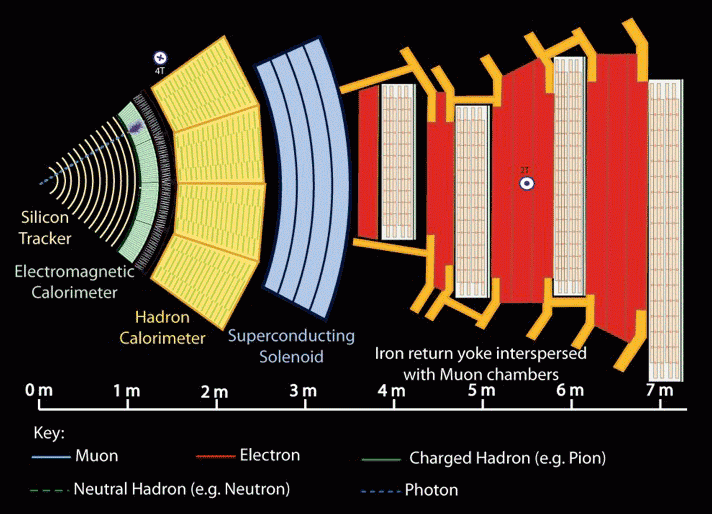
Welcome to the CMS Data Analysis School 2023 Tracking and Vertexing Short Exercise!
We will present an introduction to using tracks for analyses in the era of large pile-up (many primary vertices). Our exercises will all use real data and will familiarize you with the following techniques:
Exercise Goals
- Extracting basic track parameters and reconstructing invariant masses from tracks in CMSSW. Tracks are the detector entities that are closest to the four-vectors of particles: the momentum of a track is nearly the momentum of the charged particle itself.
- Cleaning sets of tracks for analysis. We will use filters to eliminate bad tracks and discuss sources of tracking uncertainties. These filters are provided by the tracking POG (Physics Object Group)
- Extracting basic parameters of primary vertices. In this high-luminosity era, it is not uncommon for a single event to contain as many as thirty to fifty independent collisions. For most analyses, only one is relevant, and it can usually be identified by its tracks.
- Using tracks to measure from data and Monte Carlo (MC) samples the tracking efficiency by using tag and probe method via dimuon resonances. It can be extended to measure the efficiency of any selection of muons (trigger, isolation, identification) and derive scale factors from MC.
Prerequisites
Before going any further, please complete the CMS DAS Pre-Exercises and then follow the instructions on the setup page.
Facilitators
- Marco Musich*, University and INFN of Pisa (marco.musich@cern.ch)
- Brunella D’Anzi, University and INFN of Bari (brunella.d’anzi@cern.ch)
- Erica Brondolin, CERN (erica.brondolin@cern.ch)
- Karla Pena, University of Hamburg (karla.pena@cern.ch)
- Adriano Di Florio, University and INFN of Bari (adriano.di.florio@cern.ch)
*Lead Contact
Marco Musich
🖋
Brunella D'Anzi
🖋
Erica Brondolin
🖋
Karla Pena
🖋
Adriano Di Florio
🖋
Mattermost Chat
The Tracking and Vertexing Short Exercise channel will be available once you join the CMSDAS@CERN2023 team. Direction for how to join this Mattermost chat team can be found on the setup page.
CERN Twiki and Introduction Slides
The CERN TWiki of this short exercise can be found at this link. At the beginning of this short exercise an introduction will be done based on these slides.
Close-out Slides
You can find a guideline closeup for the Tracking and Vertexing Short Exercise questions and results on these slides.
